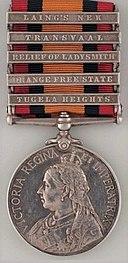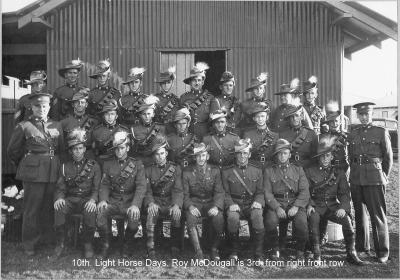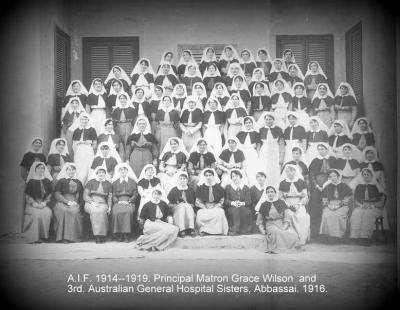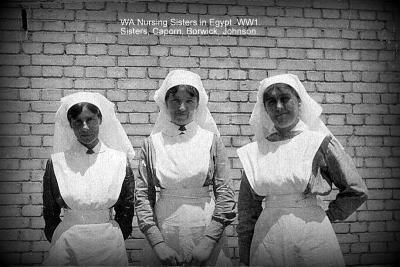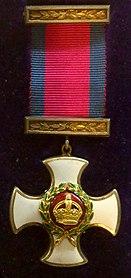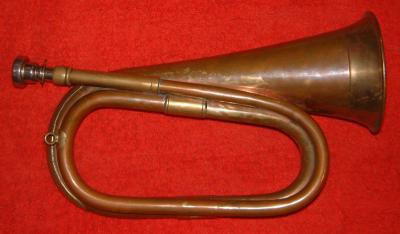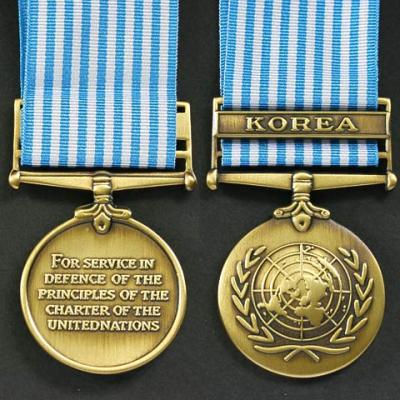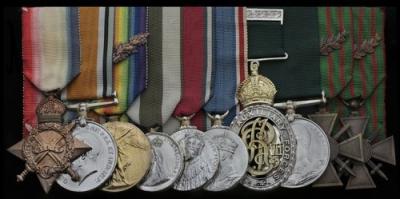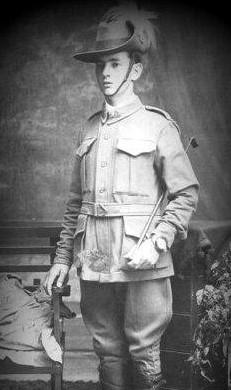Medal - Mentioned in Despatches Insignia
In 1920 emblem of bronze oak leaves was issued to individuals who had been Mentioned in Despatches (MID) between 4 August 1914 and 10 August 1920. The device was to be worn at a low angle in the centre of the ribbon of the Victory Medal. Only one device was awarded per person, even if an individual was mentioned more than once. After World War 1 the emblem was changed to a single bronze oak leaf. Emblems granted for mentions during the Second World War were worn in the centre of the 1939–1945 War Medal.
One of the oldest Imperial forms of recognition for bravery or distinguished service is when a serviceman or servicewoman was Mentioned in Despatches.
A despatch is an official report, written by a senior commander on operations to report progress of military operations. Commanders would include in their despatches the names of those meriting attention for their services. Mentions may be for a specific act of bravery or for a period of outstanding service. If your name appeared in these lists you were said to have been “Mentioned in Despatches”. The despatches were usually published in The London Gazette, so a mention equated to a public commendation. Prior to 1979, a mention in despatches was one of only three awards that could be made posthumously, the others being the Victoria Cross and George Cross.
Details
Details
Prior to 1919 those Mentioned in Despatches did not receive any form of recognition other than having their names published in The London Gazette or the Australian Gazette. In 1919 a certificate was introduced to acknowledge those who received mention.
Australian service personnel are no longer eligible to be mentioned in dispatches. Since 15 January 1991, when the Australian Honours System was established, the MiD has been replaced by the Australian decorations: the Commendation for Gallantry and the Commendation for Distinguished Service. Similarly, the equivalents of the MiD for acts of bravery by civilians and by soldiers not engaged with the enemy have also been reformed. The reformed and comprehensive system is now as follows:
• The Commendation for Gallantry is now the fourth level decoration for gallantry.
• The Commendation for Brave Conduct recognises acts of bravery carried by soldiers not directly fighting the enemy and by civilians in war or peace.
• The Commendation for Distinguished Service, a third level distinguished service decoration, recognises distinguished general service, for exemplary performance in fields such as training, maintenance and administration.
Multiple examples of these medals are retained as an ongoing memorial to the service and sacrifice of Western Australians. Medals are displayed in context throughout the Museum. All medals are identified, archivally stored and those not on display are accessible and viewable with prior notice.
Australian Army Museum of Western Australia
Australian Army Museum of Western Australia
Other items from Australian Army Museum of Western Australia
- Queen's South Africa Medal (QSA)
- King's South Africa Medal (KSA)
- Inter-War, Australia, Western Australia, Guildford, McDOUGALL,10 Light Horse
- World War 1, Middle East, Egypt, WILSON, 3 Australian General Hospital, 1916
- World War 1, Middle East, Egypt, BORWICK, CAPORN, JOHNSON, 3 Australian General Hospital, 1916
- Medal - Distinguished Service Order (DSO)
- Australian Army Bugle
- United Nations Service Medal Korea
- The Korea Medal
- Medal Group Miniatures - Lieutenant General Sir Joseph John Talbot Hobbs, KCB, KCMG, VD
- World War 1, 47 COX, 10 Light Horse, 1914
- World War 1, 48 CREEPER, 10 Light Horse
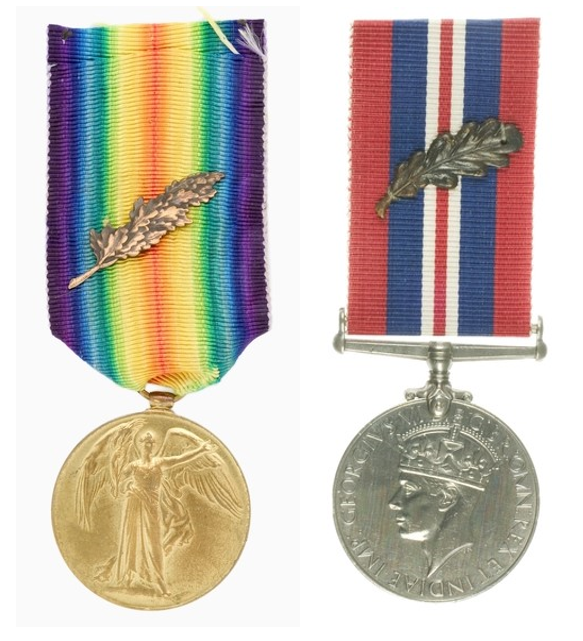
Scan this QR code to open this page on your phone ->

